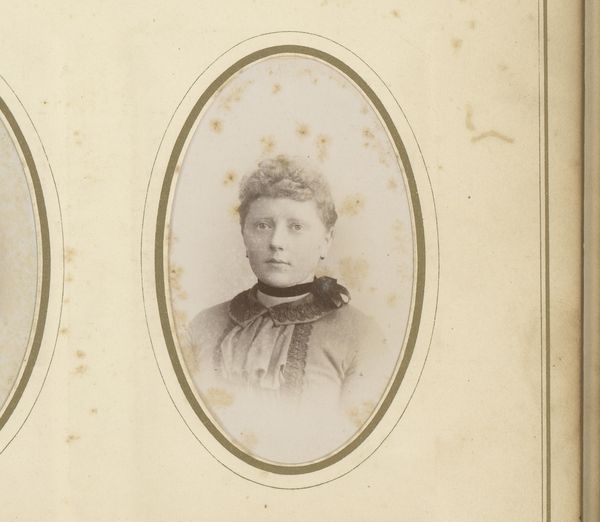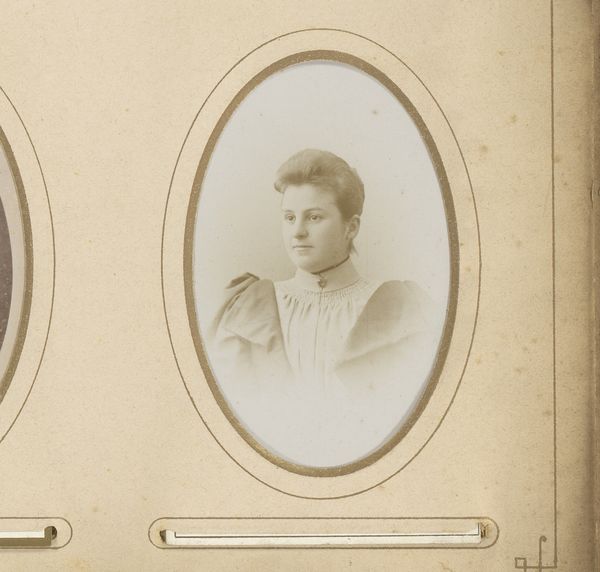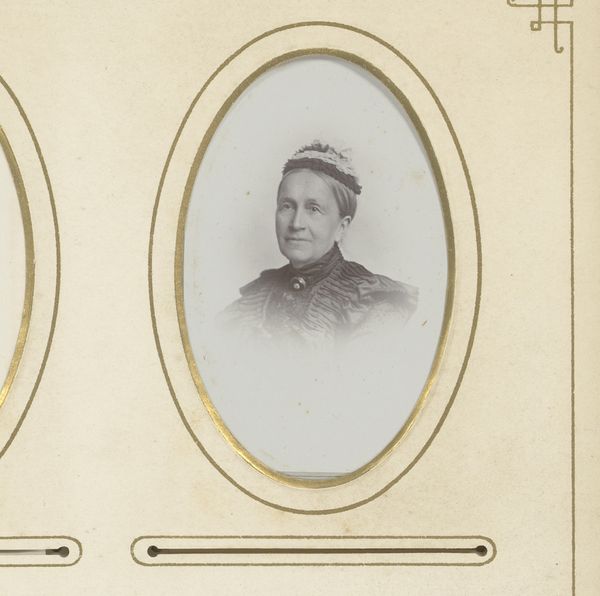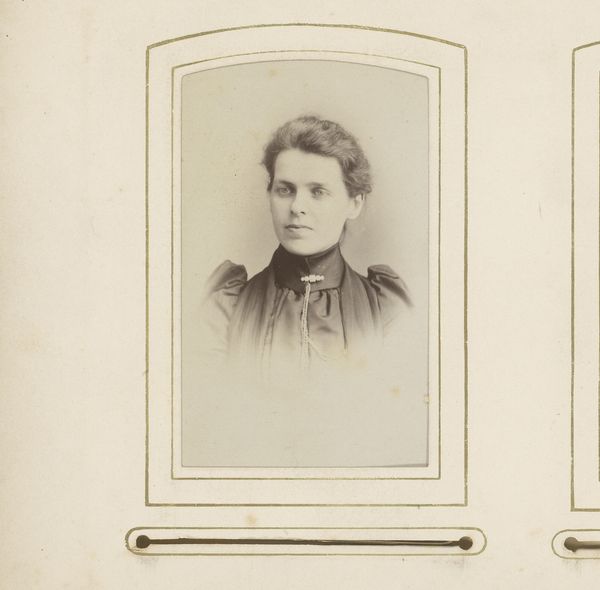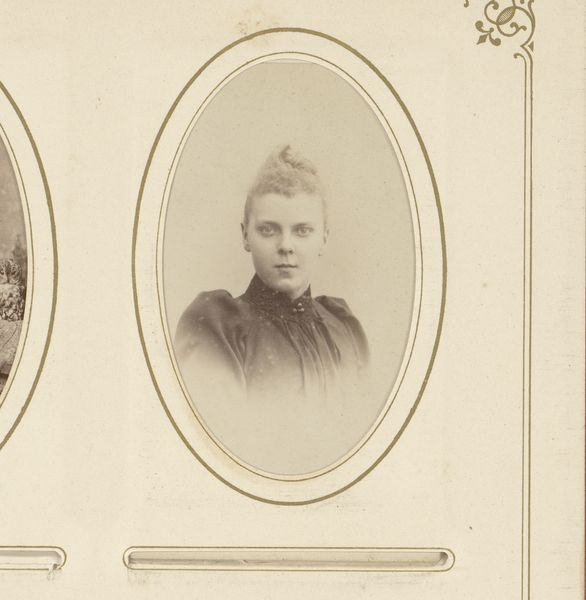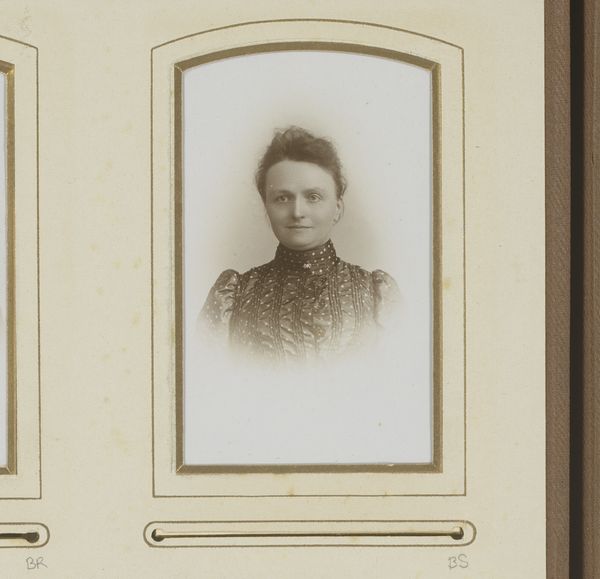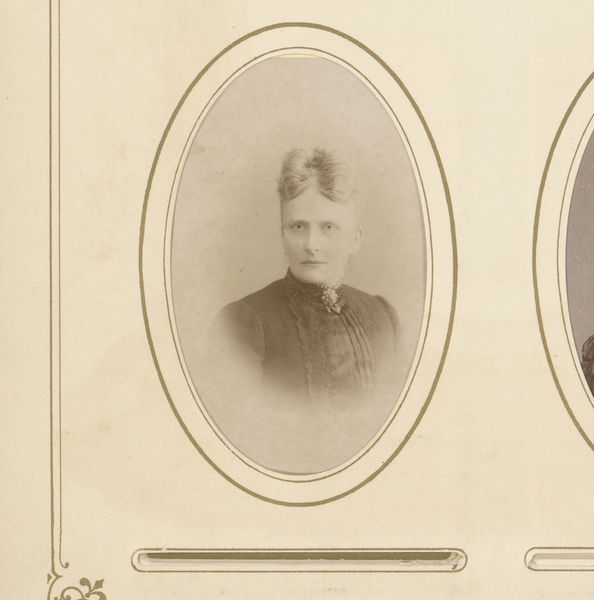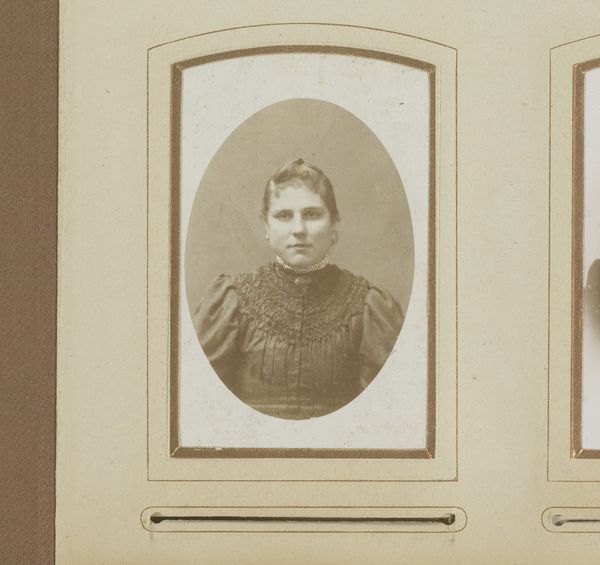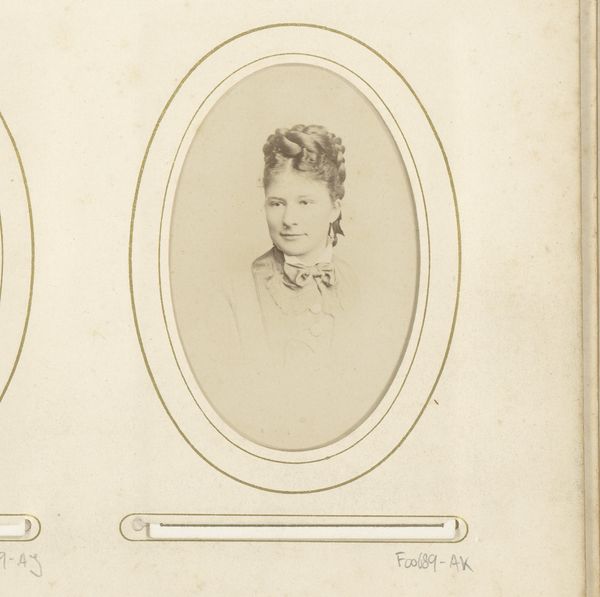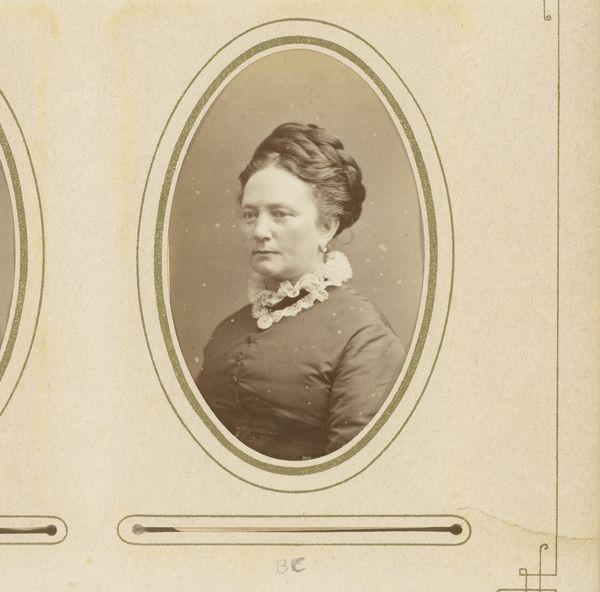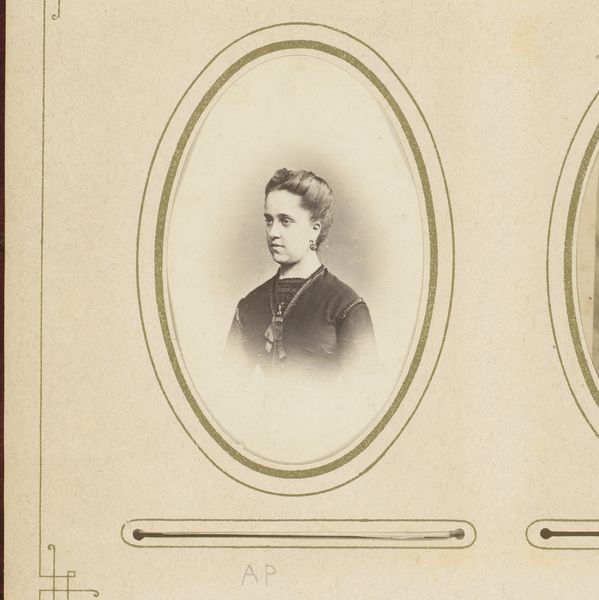
photography, albumen-print
#
portrait
#
photography
#
historical photography
#
albumen-print
#
realism
Dimensions: height 87 mm, width 53 mm
Copyright: Rijks Museum: Open Domain
Curator: This albumen print, simply titled "Portret van een vrouw" or "Portrait of a Woman" by Hendricus Jacobus de Koe, dating from around 1895-1899, is part of a larger photo album, a very popular format for portraits at the time. What strikes you most when you see this image? Editor: I find the woman's gaze quite direct, almost challenging. And there is an austere quality to the portrait, even with the ornate frame around it. What is your read? Curator: Precisely! Consider the historical moment: the turn of the century. What narratives of womanhood were dominant? This woman seems to defy those expectations. The albumen print process, while common, creates a ghostly, almost ethereal quality. Is she a wife or mother or an entirely different character? Is this about an intentional disruption to the male gaze through photographic technology and representation? Editor: I never thought about it that way. The way she is dressed also suggests more conventional femininity. But her stern expression is interesting… Maybe she is actively refusing the demure poses usually associated with feminine portraiture? Curator: Exactly! What does that sternness tell us? Maybe she owned the picture as a mark of independence. Think of the emerging discourses of female emancipation during this era. It’s possible that De Koe, in capturing her image, also captured a quiet act of defiance against societal norms. Editor: So it is important to see this "Portret van een vrouw" not just as an individual likeness, but also as an artifact reflecting the sociopolitical climate, especially gender roles, of the late 19th century. I appreciate your highlighting how an artistic choice can hint at so much more. Curator: Indeed. Now when you look at photography, ask yourself “Whose stories are often not told?” It’s also key to examine photography through these intersections of gender, class, and historical context, to understand not only what’s being shown, but what power dynamics are at play.
Comments
No comments
Be the first to comment and join the conversation on the ultimate creative platform.
